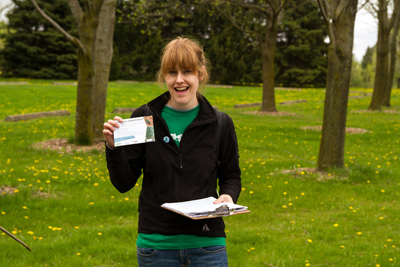This past Saturday, a group gathered in Milne Park in Markham to get a closer look at the effect of EAB during our Out of Ashes Tree Tour. Leading the tour with me were Kathleen Ryan, Forest Entomologist with Silv-Econ Ltd., and Stacey Bowman, Invasive Species Specialist with York Region. Both are hopeful that we can use what we’ve learned from this infestation to create a more resilient urban forest for the future.
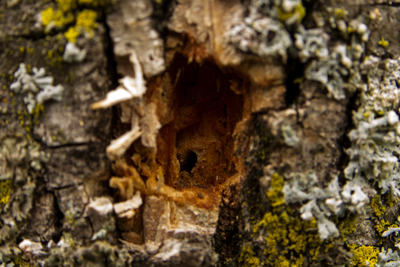
To start, Kathleen taught us how to identify ash trees by looking at branching structure as well as leaf and bark characteristics. She showed us how to spot the signs and symptoms of EAB infestation and we had an up-close look at D-shaped exit holes made by the adult borer as it makes its way out of the bark of the tree. She also talked to us about branch sampling – a technique used to determine if EAB is present in a tree – and showed us the serpentine galleries made by the larva as it is feeds between the bark and sapwood.
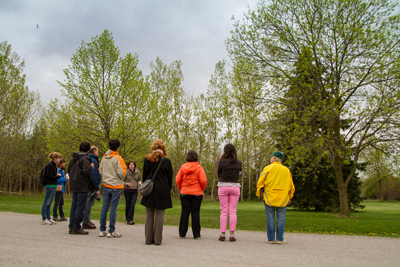
As we made our way along the main path of Milne Park, we noticed that the majority of mature trees lining the laneway were ash. We gathered around a grouping of stumps where some ash trees had been removed last year, and reflected on how many more would soon be coming down in this park alone. Stacey talked to us about what the loss of so many trees means for York Region’s urban forest, and how this infestation has taught us just how important it is to plant a diversity of species so that we don’t see such concentrated losses of trees in the future. Stacey also touched on what York Region is doing in response to EAB, and why their support of LEAF’s subsidized Backyard Tree Planting Program is more crucial than ever at this time.
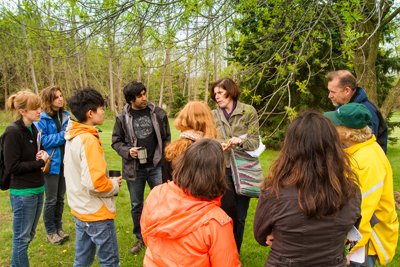
Next we took a step off the main path, and followed Kathleen to one of the areas in which she is conducting research on biological controls for EAB. She explained to us the methods by which she is looking to increase food availability and quality of habitat for parasitoids – like wasps and other insects that can be a natural control for the Borer. While it may be too late to halt the spread of EAB throughout York Region, Kathleen’s research offers hope for the control of populations of this invasive insect in the future.
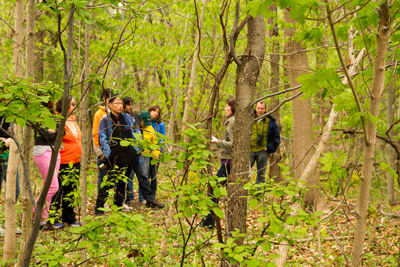
We at LEAF believe that by working together we can create a stronger urban forest for the future. If you want to help us spread the word about EAB and encourage treatment of trees and replacement plantings in your neighbourhood, sign up to become a LEAF EAB Ambassador today! Training sessions are coming to York Region and Toronto throughout May and June.
